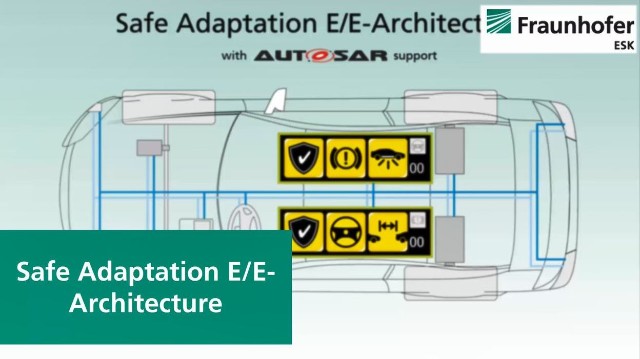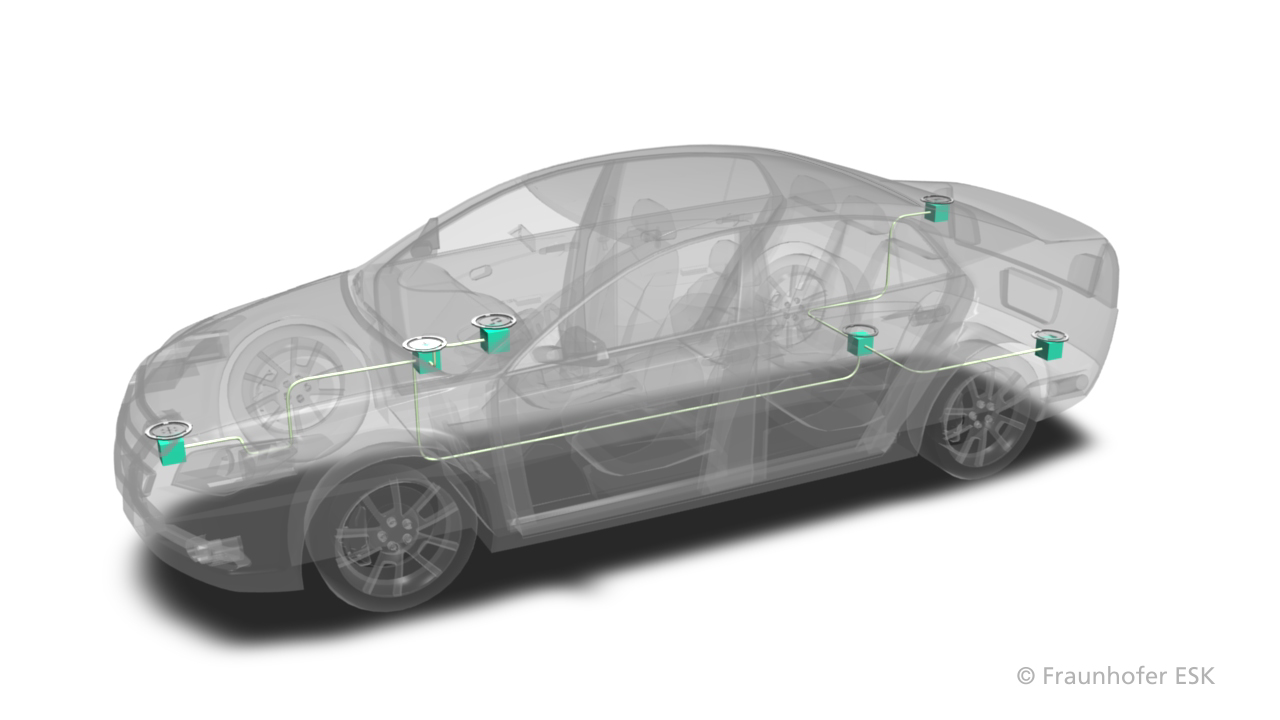The automotive industry faces an era of rapid change with the advent of electric drive trains. The trend towards electric vehicles also means a shift to full electric control of existing and new functions. This requires a dramatic change of a vehicle´s system architecture. Highly integrated subsystems, like wheel-hub drives and brake-by-wire systems, require innovative hardware approaches and software implementations to adress their safety-critical nature. As a result, the overall Electric/Electrical (E/E) vehicle architecture is becoming extremely complex.

Privacy warning
With the click on the play button an external video from www.youtube.com is loaded and started. Your data is possible transferred and stored to third party. Do not start the video if you disagree. Find more about the youtube privacy statement under the following link: https://policies.google.com/privacySafe Adaptation E/E-Architecture
 Fraunhofer Institute for Cognitive Systems IKS
Fraunhofer Institute for Cognitive Systems IKS
